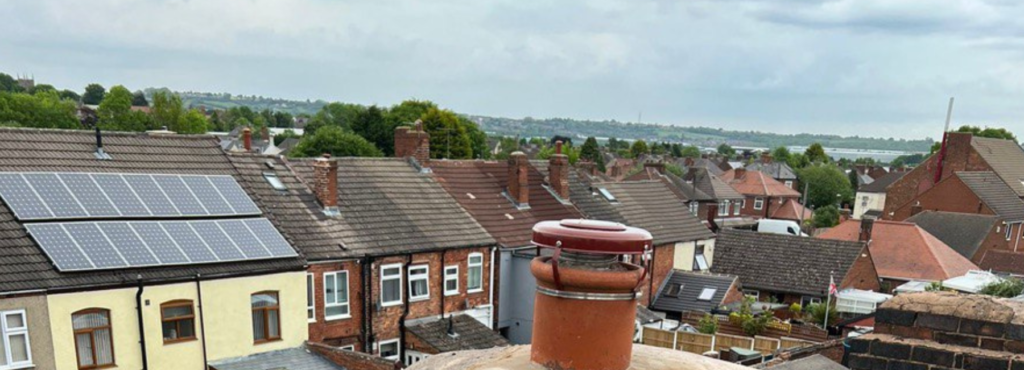Felt roofing remains a popular choice for flat roofs on extensions, garages, porches, and outbuildings across the UK. When installed correctly, it provides an affordable and weather-resistant covering. However, poor workmanship can quickly lead to a range of problems that compromise the integrity of the roof. At Cannock Roofing Repairs in Cannock, West Midlands, we frequently address issues caused by substandard felt roof installations—and understand the long-term consequences they can bring.
If you have a felt roof or are considering installing one, it’s essential to be aware of the risks associated with poor application and how to identify the warning signs early.
Inadequate Adhesion or Bonding
Proper adhesion is crucial to the performance of a felt roof. If the felt isn’t securely bonded to the deck, it will lift, bubble, or sag over time.
Typical signs:
- Blistering or air pockets beneath the surface
- Felt peeling away at the edges or seams
- Uneven or wrinkled appearance
These issues allow water to penetrate the layers, leading to leaks and rot beneath the surface.
Poor Overlapping and Joint Sealing
Felt roofing requires careful overlapping and sealing at every seam to ensure water resistance. If these overlaps are too short or not properly sealed, the roof becomes vulnerable to water ingress.
Potential consequences:
- Water leaks at junctions and edges
- Accelerated degradation from freeze-thaw cycles
- Structural damage to the roof decking or joists
At Cannock Roofing Repairs, we ensure that all overlaps and seams are heat-bonded or sealed in accordance with industry best practices.
Inadequate Drainage Design
A flat roof must be designed to allow water to drain efficiently. Poorly applied felt roofing often suffers from inadequate falls or blockages that result in standing water (ponding).
Common outcomes:
- Increased wear and softening of the felt
- Growth of moss and algae
- Shortened lifespan of the roofing system
Professional installation ensures correct gradients and drainage points to prevent water from pooling.
Incorrect Detailing Around Edges and Fixtures
One of the most critical aspects of felt roofing is detailing around upstands, skylights, vents, and parapets. Poor detailing can lead to major issues.
Risks include:
- Water seeping behind the felt at weak points
- Premature cracking due to movement or thermal expansion
- Difficulty identifying and repairing localised leaks
High-quality detailing requires skill, especially where multiple surfaces or materials meet.
Use of Substandard Materials
Even with proper technique, using low-quality felt or adhesives can result in a roof that deteriorates faster than expected.
What to look for:
- Felt that becomes brittle or cracks within a few years
- Discolouration or excessive wear
- Poor UV resistance leading to early degradation
At Cannock Roofing Repairs, we use high-performance felt membranes designed for longevity and resilience in the British climate.
Lack of Ventilation and Breathability
Some flat roofs require vapour control or ventilation layers to prevent condensation build-up. A poorly constructed felt roof without the right layers may trap moisture inside the structure.
This can lead to:
- Mould and mildew forming beneath the felt
- Timber decay in the roof deck
- Reduced thermal performance of insulation
Proper design and installation techniques prevent these issues from developing.
Conclusion
Poorly applied felt roofs can lead to serious structural and water-related problems that are often expensive to fix. From weak bonding and poor drainage to substandard materials and faulty detailing, the consequences of bad installation can be extensive. At Cannock Roofing Repairs in Cannock, West Midlands, we specialise in diagnosing and repairing felt roof issues with precision and professionalism, ensuring long-lasting protection for your property.
If you suspect your felt roof has been poorly installed or you’re seeing signs of failure, contact Cannock Roofing Repairs today for a full inspection and expert guidance on the best solution.
Call us on: 01543 220 998
Click here to find out more about Cannock Roofing Repairs
Click here to complete our contact form and see how we can help with your roofing needs.

